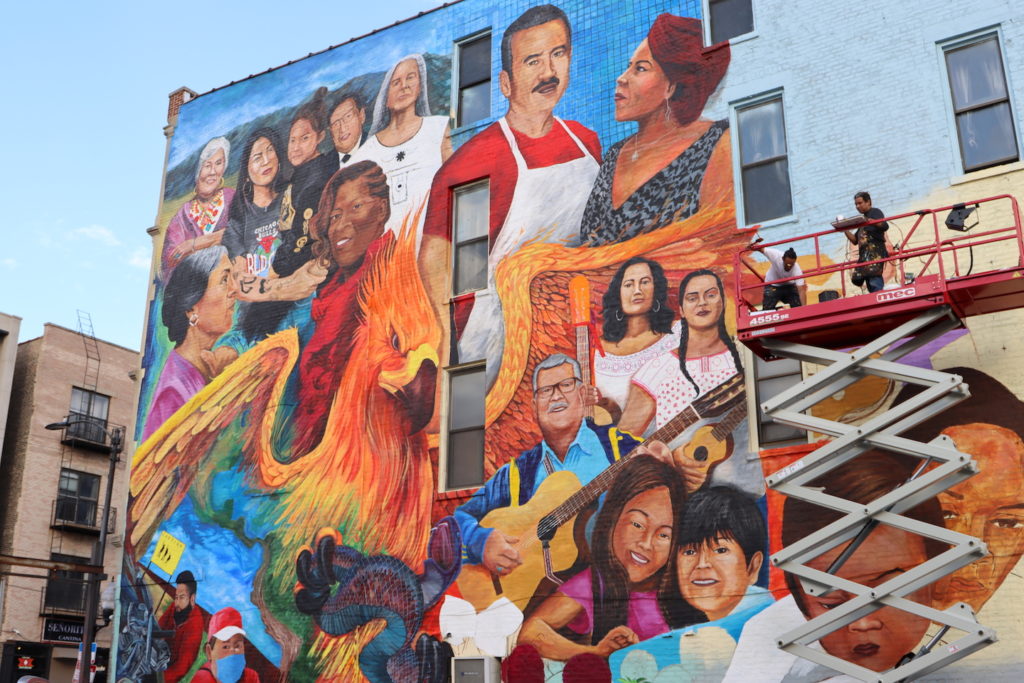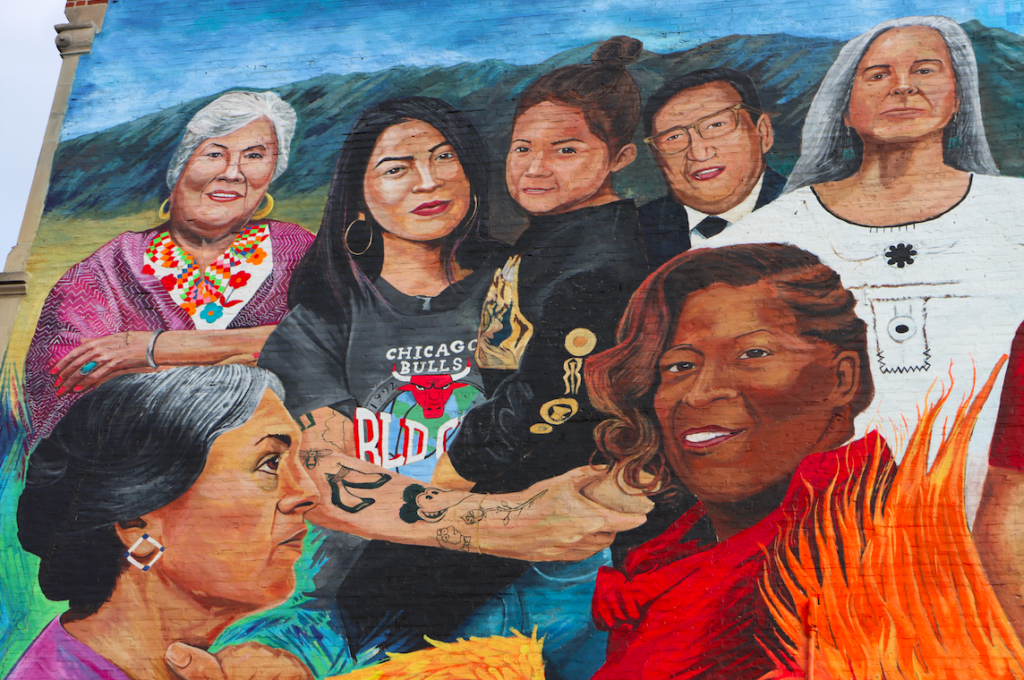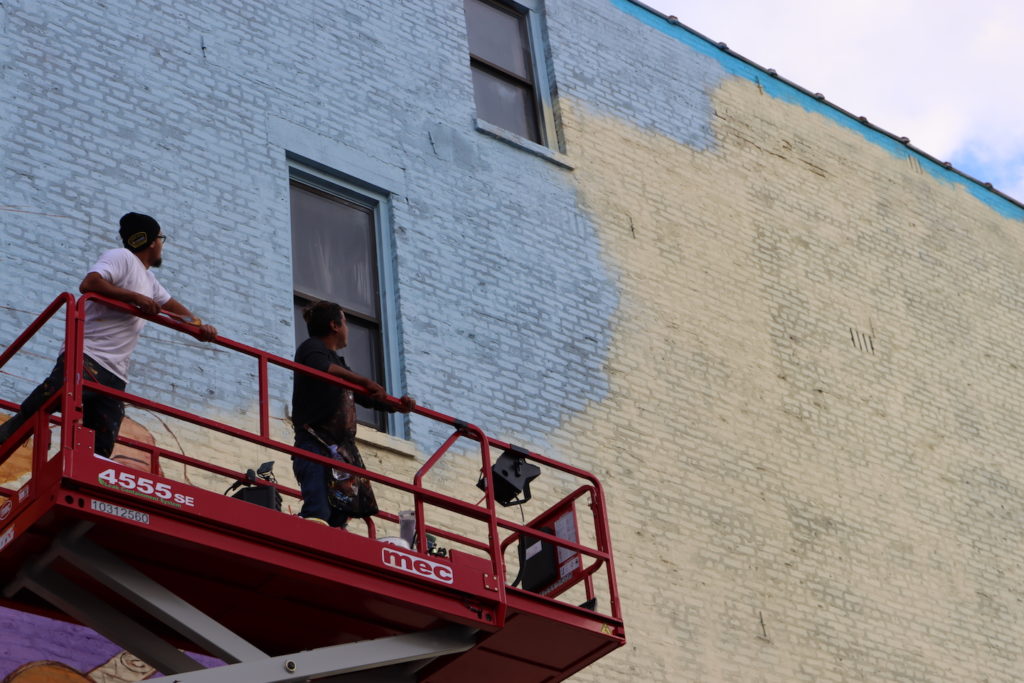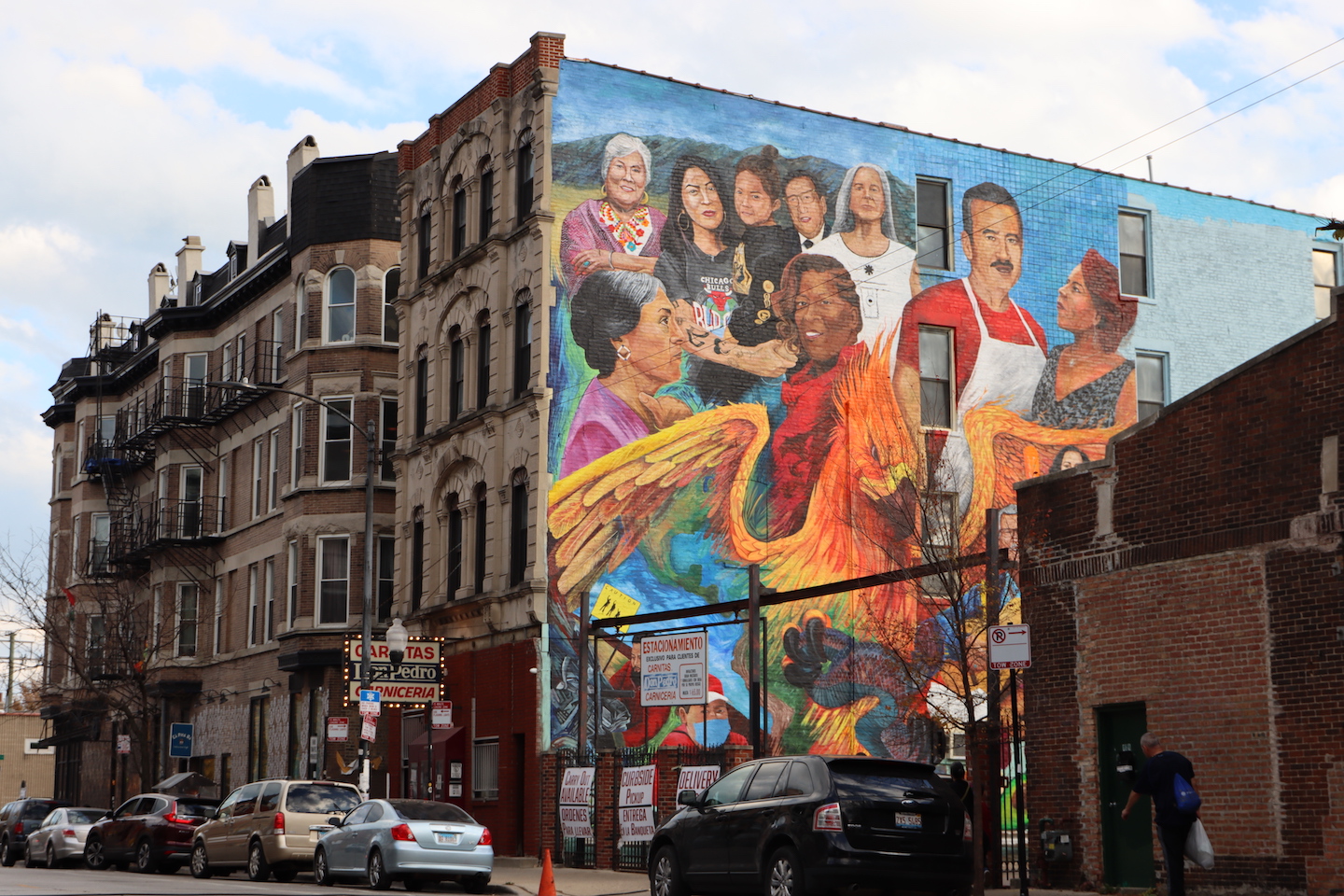Don Pedro had wanted a mural inside of his carnitas restaurant before he passed away three years ago from illness, said owner and former spouse Magdalena Duarte as she stood in the parking lot gazing up at the brick wall. She lives on the second floor.
Normally, the parking lot of Carnitas Don Pedro, located at 1113 W. 18th Street, would be crammed on a Sunday, with employees and customers inside shouting orders of “chicharrón”, “buche” (tripe), and other deep-fried pork favorites wrapped in white butcher paper, later to be feasted on with steaming tortillas. For nearly four decades, long before the dreaded g-word entered our vocabulary, Mexican families outside of Pilsen made the weekend pilgrimage, driving across neighborhood, city, and state lines to get a taste of the central Mexican state of Michoacan. But since COVID-19 entered the picture, the usual crowds have simmered down—though a line of customers now snakes down 18th Street and around the block.

Long-time resident and customer Pablo Serrano put aside his DJ equipment and months worth of karaoke bookings when the pandemic struck, and during that downtime—yearning to interact with community members—he remembered some unfinished conversations he’d had with the Duarte family, with whom he and his brothers have a long friendship.

Serrano’s portfolio includes five Pilsen murals, and he wanted to capture the endurance of everyday communities who are not just surviving the pandemic and Trump in office in 2020, but are paving the road ahead. “We have a crisis in vision and creativity to create a society where we all fit. I think there is a lot of trauma because we don’t see ourselves in the wider fabric of Chicago or in a lot of urban communities all across the country. So we’re fighting to make ourselves visible,” he said.
“We wanted to create a vision for our community that includes everyone in it. Like, ‘Hey, I know you’ve been gangbanging, but in this dream, you fit. You’re not someone we’re just going to incarcerate, gentrify away, and displace,’” Serrano said.
Photographer Mateo Zapata had never picked up a brush, but he’d picked up a spray can. And more importantly, he comes from a maternal line of ceramic artists that goes back to Chile. He teamed up with Serrano to approach the family about commissioning a mural on the western-facing wall that, he hoped, conveyed immigrant women, Pilsen street vendors, and also the youth changing the city. “On the right side, we’re going to look to the future. It’s sort of letting the [youth] understand that whatever Chicago looks like in the future, they have control over that. They have the power to shape this city.”
[Independent, local journalism has never mattered more. Please consider supporting our work today, and NewsMatch with double the impact of your donation.]
The left half of the 4,000-square-foot wall now features portraits of community elders, activists, and essential workers, to represent the neighborhood’s past and present, all visible from the street. But the second half—a blank facade for now—is a challenging and continuous work of their imagination that is enriched by everyday conversations. As they complete their work, Serrano and Zapata plan to incorporate the Chicago skyline, but also the diversity of a true multicultural city that in the future is working together and fulfilling all of its potential.

Jacqueline Serrato is editor-in-chief of the Weekly. She last wrote about how South Side high schools voted to keep or remove Chicago police.

